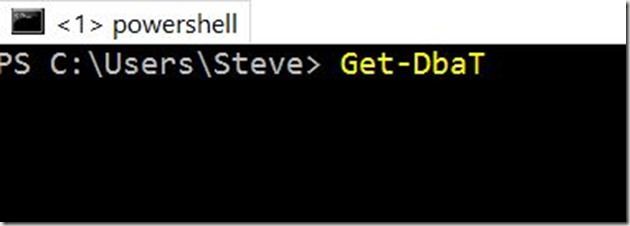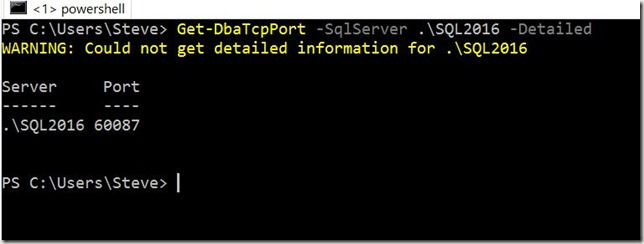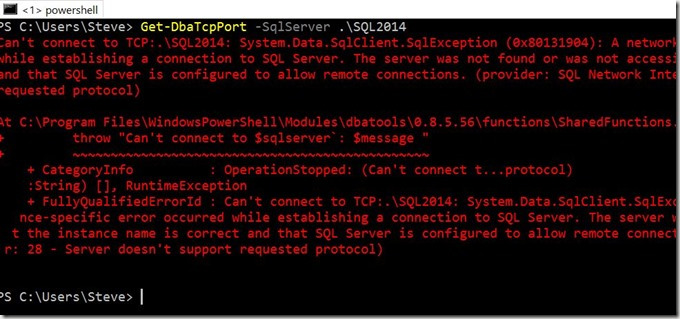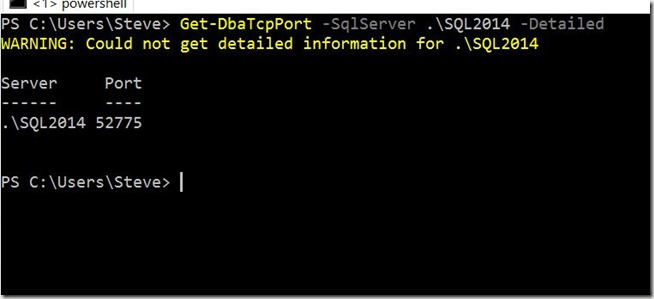After the MVP Summit, I was excited to check out more code and features in all aspects of SQL Server, but since I’d had a quick conversation with Aaron Nelson and Chrissy LeMaire, I decided to tackle another part of dbatools.
BTW, they gave me a cool sticker.
I like using PoSh for some tasks, especially when I don’t have an easy way to do something in SSMS or want to run a task across a variety of instances. In this case, as I glanced through the September updates, I found a good one.
Get-DbaTcpPort
I don’t love the mixed naming, and I’ll get used to it, but I do love the autocomplete in PoSh. I can type this:
When I hit tab, I get this:
So I don’t need to worry about the case, but I can easily use Get-DbaTcpPort. This is one of those quick things I’ve done more than a few times as I troubleshoot connectivity with VMs or new instances. I have learned I can get this from the error log, but that’s a pain.
The main thing I can do here is pass in the SqlServer parameter and get a port. Here’s the ports for an instance on this machine:
There is a –Detailed option, which gives me the server name and cleaner results.
I was expecting the result of whether this was static or now, but it’s not appearing. I see the warning, but am not sure why this doesn’t work. Apparently this works with SqlWmi, but I’d like to know more to troubleshoot things.
When I hit one of my other instances, I got this:
At first I thought this was my remote admin connections setting, which was disabled, but that wasn’t it. I found instead that I’d left TCP disabled by default on this instance. Once I changed that and restarted the instance, it worked fine.
This isn’t something I’d use often, but it’s a really quick way to check on the status of an instance port if you need to. I’d urge you to give it a try and see what you think.
Filed under: Blog Tagged: dbatools, powershell, syndicated
![]()









